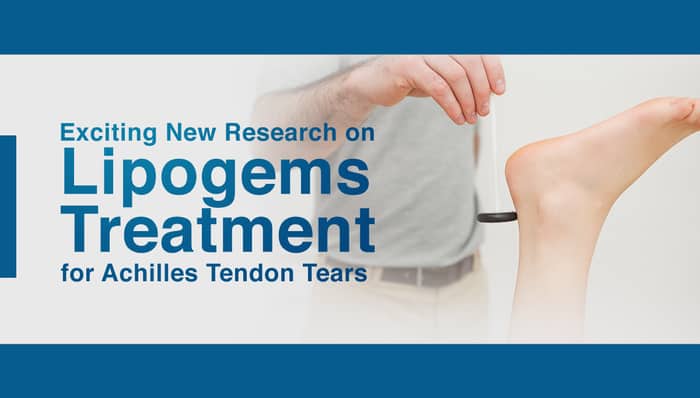Chronic degenerative tendon disorders (tendinopathy) occur frequently and are difficult to treat. Tendon injuries are often associated with significant physical dysfunction and disability, due to the limited self-repair capacity and propensity for scar formation. Non-insertional Achilles tendinopathy is a common cause of ankle pain and typically occurs 2 – 6 cm proximal to the tendon insertion on the calcaneus.
Athletes, whether elite or recreational, are the most common group to present with Achilles tendinopathy, but it is also found in people with advanced age, obesity, diabetes or hypertension. Other risk factors for Achilles tendinopathy include previous tendon injury, decreased muscle strength, altered gait kinematics, limited ankle dorsiflexion, training errors, and the use of steroids or fluoroquinolones.
Conservative Treatment for Achilles Tendon Tears
Conservative care of Achilles tendinopathy includes removal of precipitating factors, rest, training routine modifications and the use of orthotics to correct foot or ankle malalignment. Decreased myotendinous flexibility may be treated with stretching. Muscle weakness is treated with progressive eccentric strengthening exercises twice a day for up to 12 weeks using either the Alfredson or Silbernagel protocol. Combining these protocols with low-energy shock-wave therapy (ESWT) may improve outcomes. With this said, up to 33% of patients will fail conservative care and consider surgical excision of the pathologic tissue with or without tendon transfer augmentation.
Lipogems® for Achilles Tendon Tears
There is a new treatment option out there. Recent studies have demonstrated that lipoaspirate contains and produces growth-factors, such as platelet-derived growth-factor (PDGF), fibroblast growth-factor (FGF), transforming growth-factor beta (TGF-β), and vascular endothelial growth-factor (VEGF) 1. These growth factors are known to play an important regulatory role in cellular proliferation, cellular migration, matrix synthesis and angiogenesis. The Lipogems® system can produce a non-expanded, rinsed, and microfragmented adipose tissue graft that maintains an intact stromal vascular niche and contains cellular elements with mesenchymal stem cell and pericyte characteristics
Recent Case Study
Dr. Christopher Rogers recently presented a case study at the TOBY conference in Las Vegas. He and his team were able to successfully treat a 16 year old girl who had developed functionally limiting chronic Achilles tendinopathy and partial tear that were non-responsive to conservative care. She was treated with ultrasound guided lipoaspirate (Lipogems®) and LP-PRP injection combined with a progressive strengthening program. She achieved a resolution of her pain and restoration of physical function at the six month follow-up. Ultrasound and MRI imaging revealed a diffuse fibrillar pattern consistent with regenerated tendon fibers that had replaced the tendinopathic and partially torn tendon regions.
Tendon engineering is an interesting challenge for the orthopedic medicine physician. Lipoaspirate and LP-PRP have the potential to stimulate tenocyte proliferation, matrix synthesis and angiogenesis which can lead to regeneration of a degenerated Achilles tendon. Future clinical trials using lipoaspirate for the treatment of chronic Achilles tendinopathy and partial tears are warranted.
We’re pleased to have been the first medical center in San Diego to offer the revolutionary LIPOGEMS® regenerative medicine therapy. Call us today to schedule an appointment. 760-909-2355
